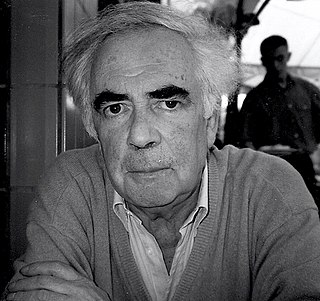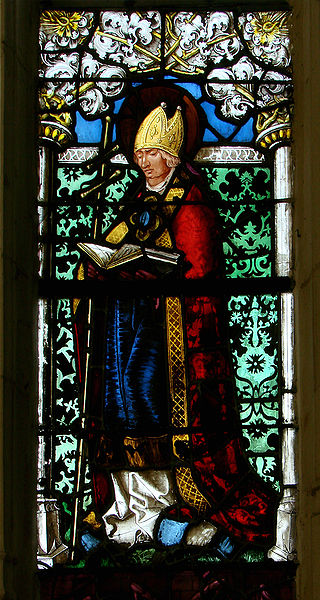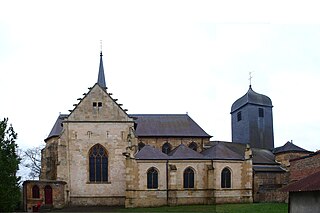
Wace, sometimes referred to as Robert Wace, was a Medieval Norman poet, who was born in Jersey and brought up in mainland Normandy, ending his career as Canon of Bayeux.

Nicolas François de Neufchâteau was a French statesman, poet, and agricultural scientist.

Saint Jacob of Nisibis, also known as Saint Jacob of Mygdonia, Saint Jacob the Great, and Saint James of Nisibis, was a hermit, a grazer and the Bishop of Nisibis until his death.
Anglo-Norman literature is literature composed in the Anglo-Norman language and developed during the period of 1066–1204, as the Duchy of Normandy and the Kingdom of England were united in the Anglo-Norman realm.
Agaunum was an outpost in Roman Switzerland, predecessor of the modern city of Saint-Maurice in the canton of Valais, southwestern Switzerland. It was used by the Roman Empire for the collection of the Quadragesima Galliarum. In Christian tradition, Agaunum is known as the place of martyrdom of the Theban Legion.

Rocamadour is a commune in the Lot department in southwestern France. It lies in the former province of Quercy.

According to Eastern Christian tradition, Addai of Edessa or Thaddeus of Edessa was one of the seventy disciples of Jesus.

Count Toussaint-Guillaume Picquet de la Motte, also known as La Motte-Picquet was a French Navy officer and admiral. Over a career spanning 50 years, he served under Louis XV and Louis XVI and took part in 34 campaigns. He fought in the Seven Years' War and in the Naval battles of the American Revolutionary War, earning the ranks of Commandeur in the Order of Saint Louis in 1780, and of Grand Cross in 1784. He died during the French Revolution.

The Monastery of Saint Thaddeus is an ancient Armenian monastery in the mountainous area of West Azerbaijan Province, Iran. It is believed to be one of the oldest church buildings in the world.

Claude Esteban was a French poet.

Saint Claudius of Besançon, sometimes called Claude the Thaumaturge, was a priest, monk, abbot, and bishop. A native of Franche-Comté, Claudius became a priest at Besançon and later a monk. Georges Goyau in the Catholic Encyclopedia wrote that “The Life of St. Claudius, Abbot of Condat, has been the subject of much controversy.” Anglican Henry Wace has written that "on this saint the inventors of legends have compiled a vast farrago of improbabilities."

Aubin is a commune in the Aveyron department in the Occitanie of southern France.

Jean Sirmond was a neo-Latin poet and French man of letters, historiographer of Louis XIII.

Saint-Amand-de-Coly is a former commune in the Dordogne department in Nouvelle-Aquitaine in southwestern France. On 1 January 2019, it was merged into the new commune Coly-Saint-Amand.

Saint-Gédéon or Saint-Gédéon-de-Grandmont is a municipality in Quebec, Canada, in the regional county municipality of Lac-Saint-Jean-Est and the administrative region of Saguenay–Lac-Saint-Jean. It is on the eastern shore of Lac Saint-Jean at the mouth of the Belle River.

Pangaltı is one of the four neighborhoods within the Nişantaşı quarter of the Şişli district in Istanbul, Turkey.

Saint Maurilius (French: Maurille) (c. 336 – 453), a priest originally from Milan, was the bishop of Angers between 423 and 453. He played an early role in the Christianization of Gaul.

Paulus of Verdun (576-648) was a bishop of Verdun in the Lorraine region of France from 630 until his death in 647 or 648.
Council of Nîmes (396) was an important early Roman Catholic church Synod held in Nîmes, France on 1 October 396. It concerned the heresy of Ithacans that affected Christian unity, and resulted in the adoption of seven canons on church discipline, including the forbidding of female deaconesses.
Auguste Jubé, baron de La Perelle was a French general, politician and historiographer.






















